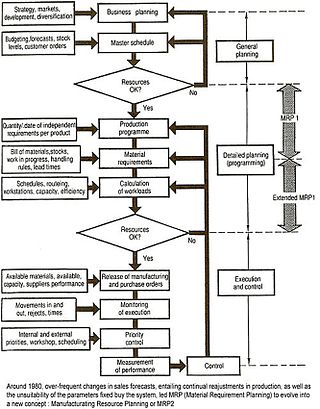Related Research Articles
Model Driven Architecture (MDA) is a software design approach for the development of software systems. It provides a set of guidelines for the structuring of specifications, which are expressed as models. Model Driven Architecture is a kind of domain engineering, and supports model-driven engineering of software systems. It was launched by the Object Management Group (OMG) in 2001.
Data engineering refers to the building of systems to enable the collection and usage of data. This data is usually used to enable subsequent analysis and data science; which often involves machine learning. Making the data usable usually involves substantial compute and storage, as well as data processing and cleaning.

Computer-aided software engineering (CASE) was a domain of software tools used to design and implement applications. CASE tools were similar to and were partly inspired by Computer-Aided Design (CAD) tools used for designing hardware products. CASE tools were intended to help develop high-quality, defect-free, and maintainable software. CASE software was often associated with methods for the development of information systems together with automated tools that could be used in the software development process.

Data modeling in software engineering is the process of creating a data model for an information system by applying certain formal techniques. It may be applied as part of broader Model-driven engineering (MDD) concept.
Gen is a Computer Aided Software Engineering (CASE) application development environment marketed by Broadcom Inc. Gen was previously known as CA Gen,IEF, Composer by IEF, Composer, COOL:Gen, Advantage:Gen and AllFusion Gen.
William H. Inmon is an American computer scientist, recognized by many as the father of the data warehouse. Inmon wrote the first book, held the first conference, wrote the first column in a magazine and was the first to offer classes in data warehousing. Inmon created the accepted definition of what a data warehouse is - a subject oriented, nonvolatile, integrated, time variant collection of data in support of management's decisions. Compared with the approach of the other pioneering architect of data warehousing, Ralph Kimball, Inmon's approach is often characterized as a top-down approach.

Manufacturingresource planning is a method for the effective planning of all resources of a manufacturing company. Ideally, it addresses operational planning in units, financial planning, and has a simulation capability to answer "what-if" questions and is an extension of closed-loop MRP.
Enterprise architecture (EA) is a business function concerned with the structures and behaviors of a business, especially business roles and processes that create and use business data. The international definition according to the Federation of Enterprise Architecture Professional Organizations is "a well-defined practice for conducting enterprise analysis, design, planning, and implementation, using a comprehensive approach at all times, for the successful development and execution of strategy. Enterprise architecture applies architecture principles and practices to guide organizations through the business, information, process, and technology changes necessary to execute their strategies. These practices utilize the various aspects of an enterprise to identify, motivate, and achieve these changes."
A functional software architecture (FSA) is an architectural model that identifies enterprise functions, interactions and corresponding IT needs. These functions can be used as a reference by different domain experts to develop IT-systems as part of a co-operative information-driven enterprise. In this way, both software engineers and enterprise architects can create an information-driven, integrated organizational environment.

James Martin was an English information technology consultant and author, known for his work on information technology engineering.
The British Ministry of Defence Architecture Framework (MODAF) was an architecture framework which defined a standardised way of conducting enterprise architecture, originally developed by the UK Ministry of Defence. It has since been replaced with the NATO Architecture Framework.
David McGoveran is an American computer scientist and physicist, software industry analyst, and inventor. In computer science, he is recognized as one of the pioneers of relational database theory.

Enterprise modelling is the abstract representation, description and definition of the structure, processes, information and resources of an identifiable business, government body, or other large organization.

John A. Zachman is an American business and IT consultant, early pioneer of enterprise architecture, chief executive officer of Zachman International, and originator of the Zachman Framework.
System integration is defined in engineering as the process of bringing together the component sub-systems into one system and ensuring that the subsystems function together as a system, and in information technology as the process of linking together different computing systems and software applications physically or functionally, to act as a coordinated whole.

erwin Data Modeler is computer software for data modeling. Originally developed by Logic Works, erwin has since been acquired by a series of companies, before being spun-off by the private equity firm Parallax Capital Partners, which acquired and incorporated it as a separate entity, erwin, Inc., managed by CEO Adam Famularo.
Enterprise engineering is the body of knowledge, principles, and practices used to design all or part of an enterprise. An enterprise is a complex socio-technical system that comprises people, information, and technology that interact with each other and their environment in support of a common mission. One definition is: "an enterprise life-cycle oriented discipline for the identification, design, and implementation of enterprises and their continuous evolution", supported by enterprise modelling. The discipline examines each aspect of the enterprise, including business processes, information flows, material flows, and organizational structure. Enterprise engineering may focus on the design of the enterprise as a whole, or on the design and integration of certain business components.

A view model or viewpoints framework in systems engineering, software engineering, and enterprise engineering is a framework which defines a coherent set of views to be used in the construction of a system architecture, software architecture, or enterprise architecture. A view is a representation of the whole system from the perspective of a related set of concerns.
Stuart Pugh was a British product designer from Halifax, UK. He is known for redefining Total Design (methodology), which had previously been coined by Ove Arup regarding integrated architecture and structural engineering, to instead map a structured and integrated process in the field of product design and development that included market and production processes.

HP Cloud was a set of cloud computing services available from Hewlett-Packard that offered public cloud, private cloud, hybrid cloud, managed private cloud and other cloud services. It was the combination of the previous HP Converged Cloud business unit and HP Cloud Services, an OpenStack-based public cloud. It was marketed to enterprise organizations to combine public cloud services with internal IT resources to create hybrid clouds, or a mix of private and public cloud environments, from around 2011 until 2016.
References
- ↑ Christopher Allen, Simon Chatwin, Catherine Creary (2003). Introduction to Relational Databases and SQL Programming.
- ↑ Terry Halpin, Tony Morgan (2010). Information Modeling and Relational Databases. p. 343
- 1 2 Clive Finkelstein biography at ies.aust.com. Accessed 10. 2014.
- ↑ "Information engineering, part 3," by Clive Finkelstein. In Computerworld, In depths, appendix. May 25 - June 15, 1981.
- ↑ DAMA International Archived 2004-10-11 at the Wayback Machine
- ↑ "Information engineering," part 3, part 4, part 5, Part 6" by Clive Finkelstein. In Computerworld. May 25 - June 15, 1981.
- ↑ "DM Review". Archived from the original on 19 January 2009. Retrieved 4 October 2004.